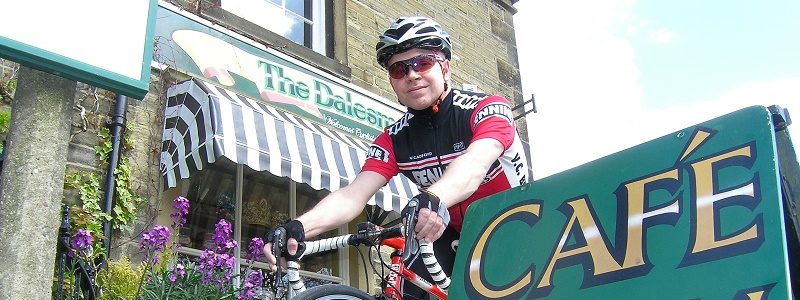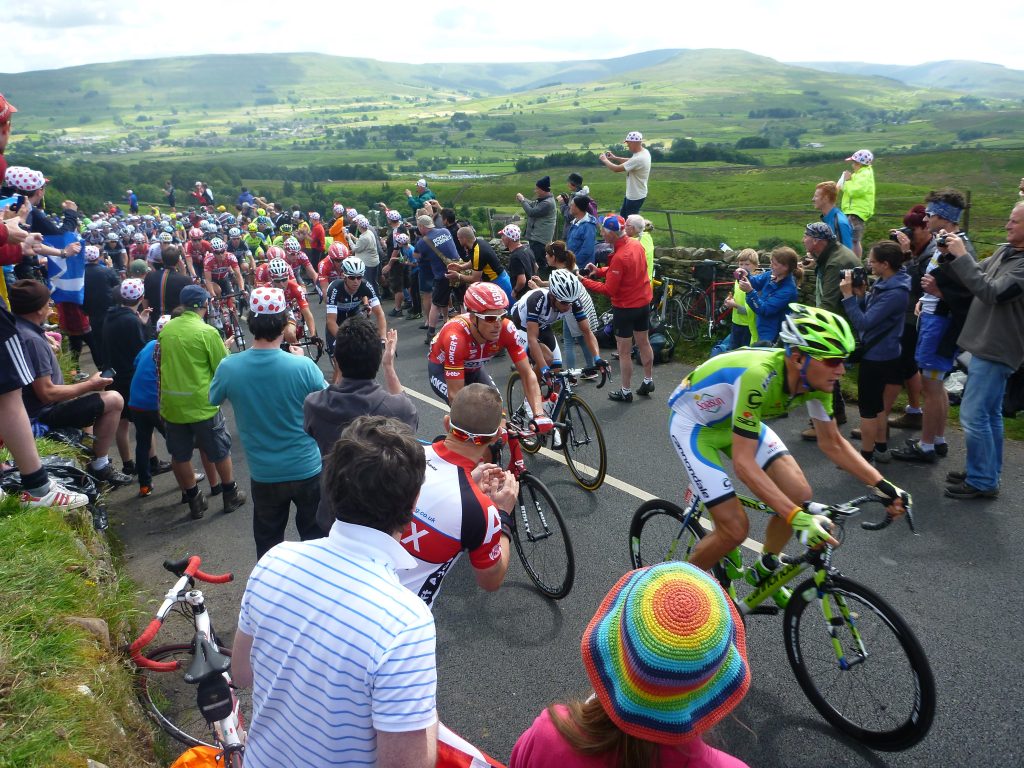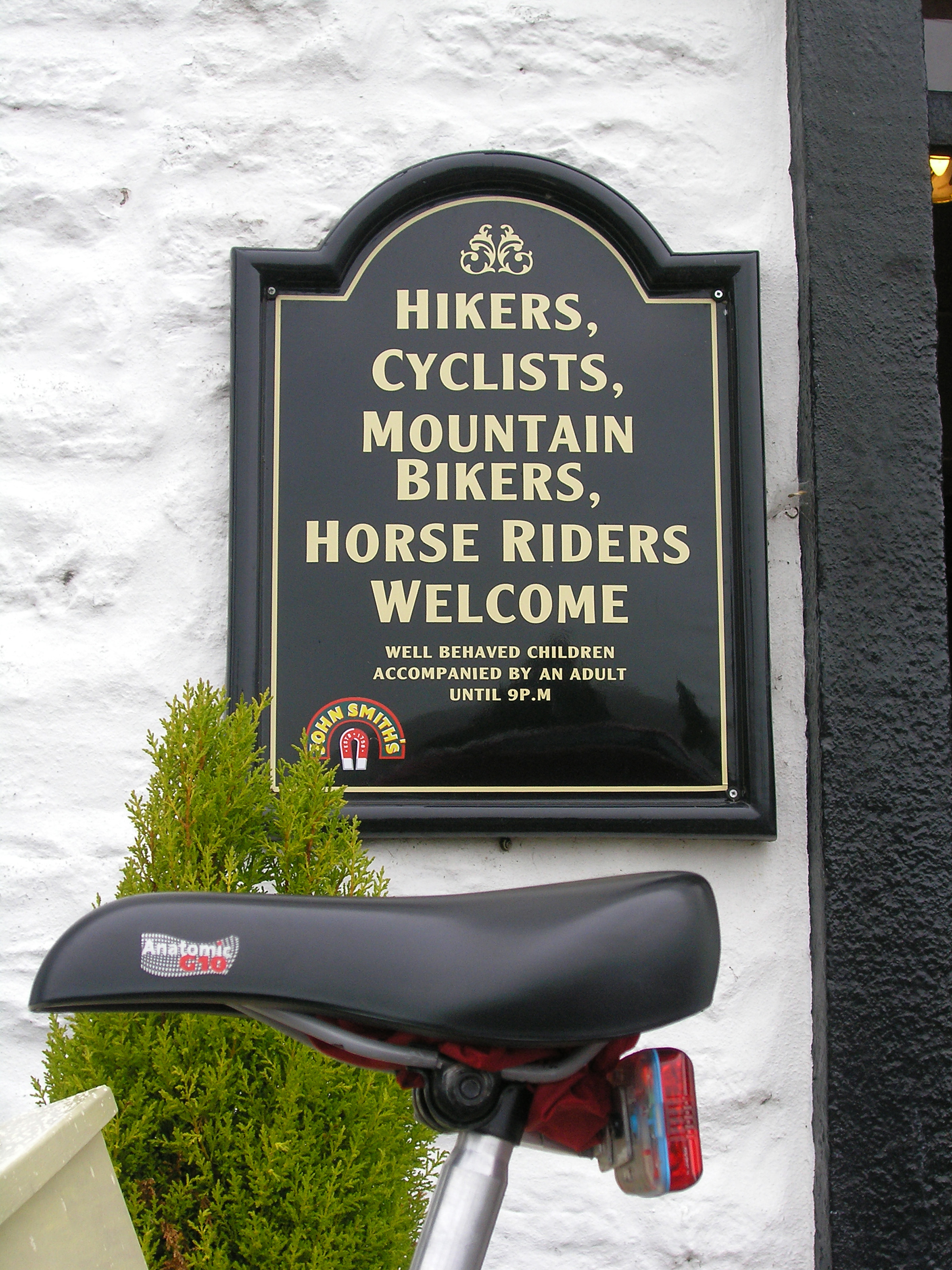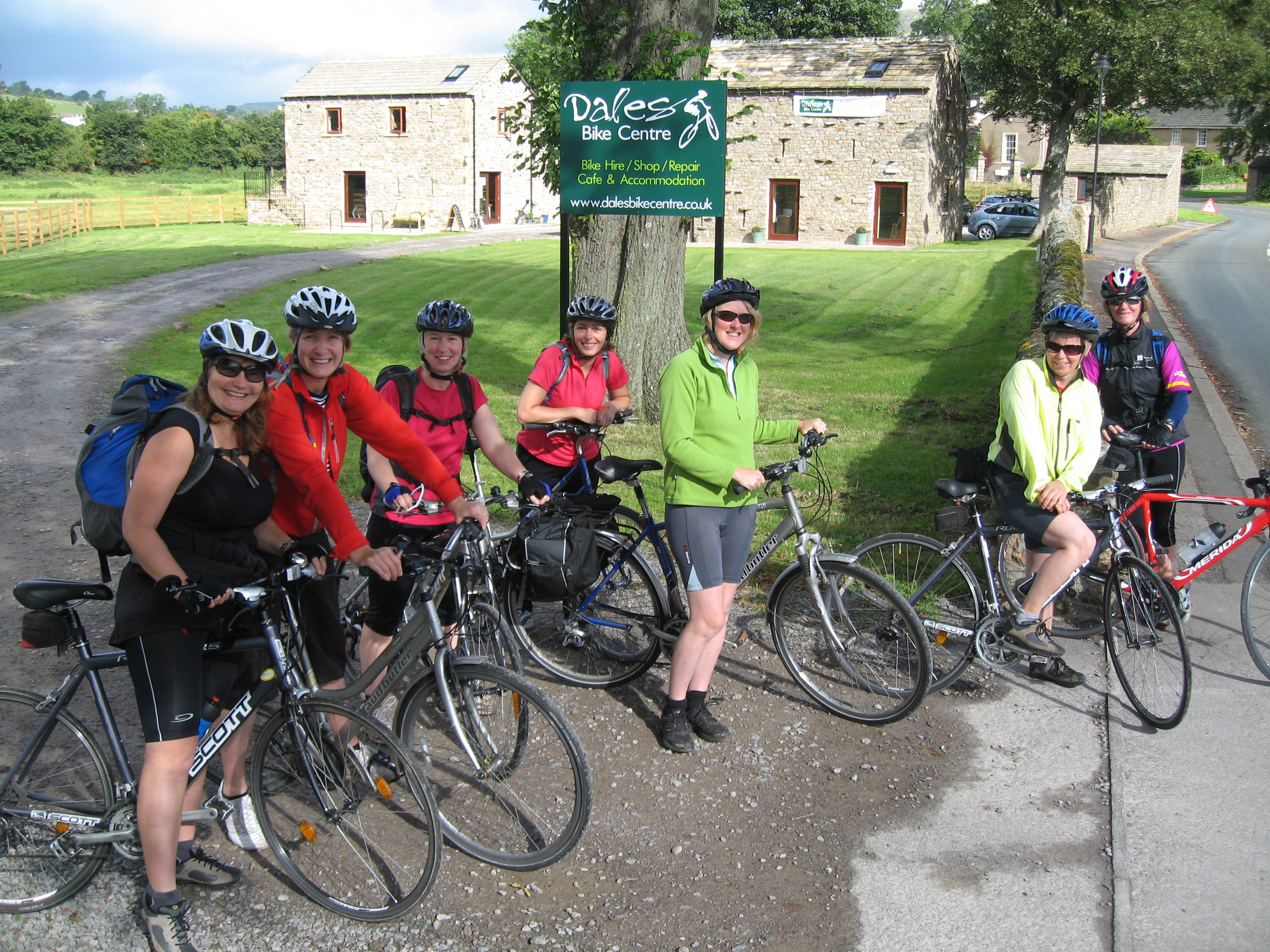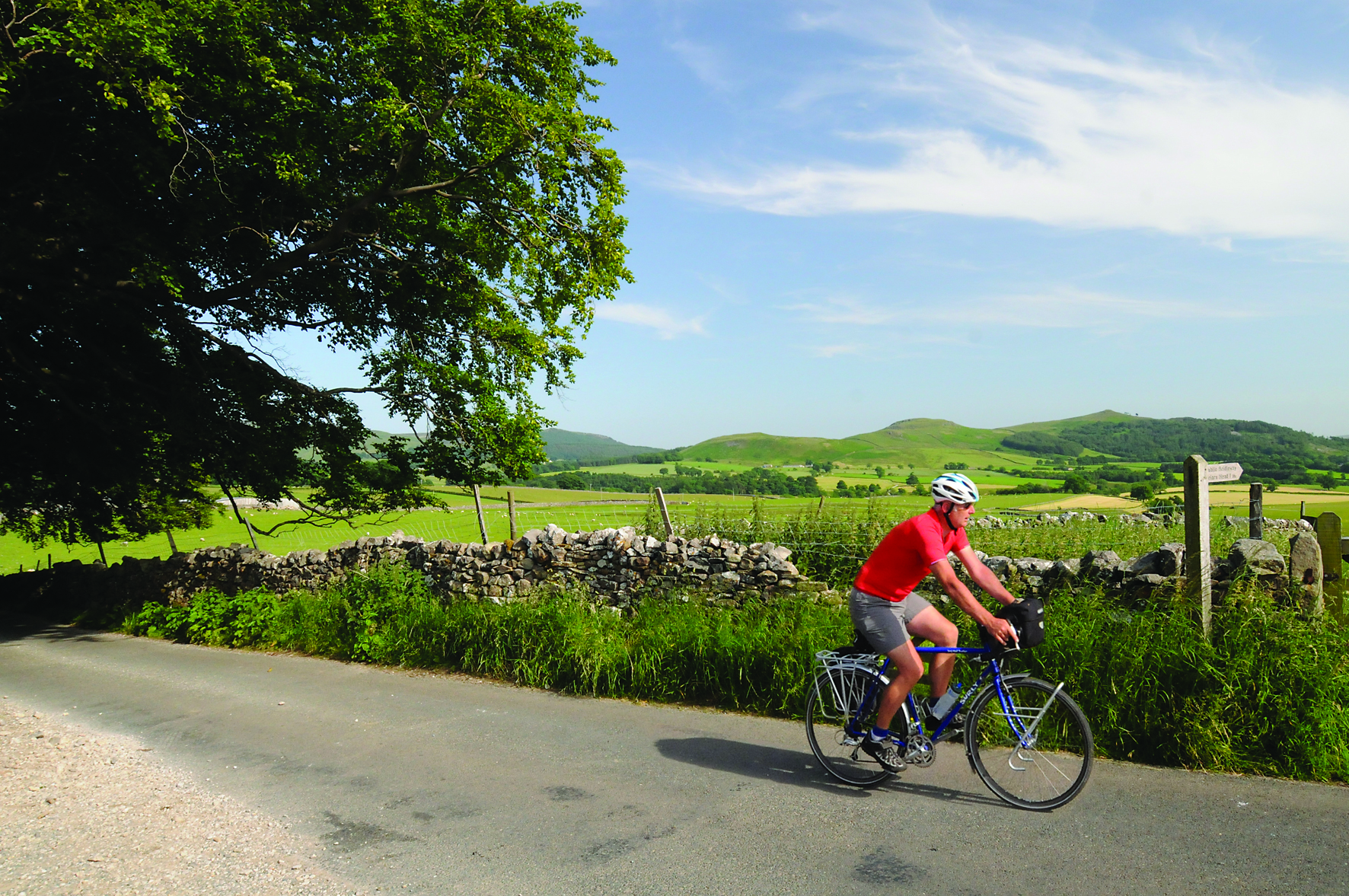By Mark Allum, Yorkshire Dales National Park Authority
(in Volume 26)
For me the 5 July 2014 will always be associated with the Tour de France coming to the Yorkshire Dales. Millions of people saw the Dales, as the top riders in the world went through the area in glorious sunshine. Tens of thousands lined the route, villages were decorated and the crowds roared riders up some of our iconic climbs. There was a festival atmosphere and a mood of celebration. In some ways this event could have been seen as a fitting culmination to many years of developing and promoting cycling in the Yorkshire Dales, but it neither marked a beginning or an end to what we hope to achieve.
In this article I will look at a number of the cycling projects that the National Park Authority have been involved with over the last ten years looking at strategy, route development, supporting infrastructure, promotion and business development.
Strategy
While this may be viewed as the dull bit, it was the development of a Cycle Tourism Strategy for the Yorkshire Dales[i] which led to many of the initiatives described in this article. Not only did a strategy outline, from the outset, what we were looking to achieve, it also brought organisations and businesses together through its development, and ultimately underpinned a number of bids for external funding. Without having a strategy which was supported by a wide range of partners far less would have been achieved.
Route development
When the first Strategy was published in 2005 there was one recognised cycle route in the Dales – the beautiful, but challenging, Yorkshire Dales Cycleway – and this had been much neglected over the years. There was no promotion of the route and it was signed with only a few faded stickers. This had a complete revamp in 2006 and is now fully signed and well promoted through a leaflet and website.
We were also involved in the development of two major new touring routes through the Dales – the Way of the Roses and the Pennine Bridleway. The Way of the Roses has quickly established itself as one of the most popular coast to coast routes in the country attracting over 8,000 end to end users each year[ii]. It was positioned to be an achievable challenge – flat at the ends but with hills in the middle – and to run through the historic cities of Lancaster and York as well as many lovely market towns.
The Pennine Bridleway runs from Middleton in Derbyshire to Kirkby Stephen with 52 miles through the Yorkshire Dales National Park. It is a national trail for walkers, mountain bikers and horse riders. It has some sections on quiet tarmac roads but is largely on well maintained bridleways. Implementation in the Yorkshire Dales was a major project involving creating 12 km of new public rights of way, carrying out major repair works to many more and building a new 53 metre bridge across the River Ribble.
What are clearly lacking in the Dales are opportunities for family friendly, preferably traffic free, cycling. There are a number of old railway lines but these are in multiple private ownership, and in many places have been reused in a variety of ways or built over so aren’t available for cycle route development. We have no areas of Forestry Commission woodland or other obvious solutions to this issue. However we do continue to look for opportunities and have recently worked with the National Trust to develop a short family friendly route around Malham Tarn.
Supporting infrastructure
It is easy to concentrate on the major infrastructure schemes but we have also tried to put in other small measures that support cycling. For instance at our public toilets we have put in an outside water tap so that drinks bottles can be refilled easily. At our car parks multi-day tickets are available so vehicles can be left unoccupied for several days while people cycle tour. We have also provided Sheffield type cycle stands to over 100 sites, including businesses in the area. This was an externally funded project where the funding covered the costs of the stands, with businesses arranging the installation which provided the match funding.
Promotion
Obviously a key part to developing cycling in the area is promotion of what is on offer. At a time when paper maps were really the only option we began by assessing the maps available. Again with external funding we worked with Harvey Maps to produce a range of cycling maps for the area; aimed both at road cyclists and mountain bikers. The funding covered the initial design work with a commitment from Harvey’s to keep them in print for seven years. After that time Harvey’s were able to take a commercial decision on the future of the maps, but significantly they all remain in print over ten years later.
Our key promotional tool for cycling is unsurprisingly the internet and dedicated websites were developed – www.cyclethedales.org.uk and www.mtbthedales.org.uk (now part of our main website www.yorkshiredales.org.uk). These were designed to inspire people to come to the Dales to ride and brought together all the information that cyclists visiting the area would want in one place. This includes providing route information in a variety of formats including various digital files for downloading to GPS. We have always received very positive feedback about the sites and have an average numbers of unique visitors of over 20,000 to the cycle the dales website each year.
In our promotion we do not hide the fact that this can be a challenging area to cycle in; in fact we make that one of the selling points. The ‘Great Climbs’ page of the website is actually one of the most popular on the site.
Business development
For some businesses cyclists are a critical part of their turnover particularly in the shoulder months of the year. Their location and taking measures to welcome cyclists is important and they are often run by people who share a passion for cycling. Other businesses in the area have needed convincing that cyclists are a potential market and over the years we have held a number of workshops on how to cater for cyclists. We also visit individual businesses to look at their facilities and suggest how these could be developed to attract cyclists, and have directly supported the development of cycle storage facilities through grants and supplied workstands and toolkits.
What hasn’t worked?
One of the areas that failed was the development of particular towns and villages as cycle hubs. The locations seemed obvious to us and were identified by the network of cycle routes which radiated from them. But then what? The development of hubs can’t be imposed or be just a label. This is something that can only really happen because the local community and businesses see the links themselves and want to develop the opportunity – otherwise it is just a nice concept.
For three years between 2002 and 2004 we also commissioned and heavily promoted a seasonal bike bus to bring people from surrounding cities and towns into the Dales. Unfortunately it did not reach the stage of being able to run commercially, despite receiving good publicity, partly because people would catch the bus out and then cycle home leading the bus to return empty.
Another project which ultimately did not work, as anticipated, was making a number of pubs which had accommodation into cycle friendly places to stay. This was based on a ‘Cycle Livery’ facility at the New Inn in Appletreewick. Although the landlord there gave great support to trying to establish a network of Liveries at other pubs it met with limited success. One of the key difficulties was the turnover in licensees, which is rapid and so there is limited incentive to take a longer term outlook and outlay.
Plans for the future
It is important that we build on the tremendous enthusiasm generated by the Tour de France and we support the regional ambition of ‘more people cycling, more often’. We are currently working on developing a suite of potential cycling projects, which sit under a vision and ambition for cycling in the Dales. This includes the aspiration of connecting every surrounding town to the National Park by a signed route and within the National Park, developing two further family friendly cycle routes. By having projects that are ready to go we hope to be in a position to take advantage of any future funding for cycling that becomes available.
Has any of this made a difference?
At this point I should produce some colourful graphs to show how cycling in the National Park has increased over the years. Unfortunately it is not as simple as that. Monitoring how many people are using specific locations is feasible on multi-user routes. However, being able to say accurately how many people are enjoying cycling in the Yorkshire Dales is just not possible.
At a national level there is clear evidence of a growth in cycling both through Sport England’s Active Peoples Survey and Natural England’s Monitor of Engagement with the Natural Environment (MENE[iii]). The Active People Survey[iv] shows an increase in adult cycling participation of 8% between 2005 and 2014. At a more local level our two main district council areas have cycling participation rates well above the national average[v].
So has the number of cyclists in the Yorkshire Dales increased over the last ten years by more than the national average? If you ask anyone who lives here or runs a business catering for cyclists the answer is definitely yes. Quantifying by how much is much more difficult but judging by the numbers going past my office window the growth is real and we intend to work to keep it growing – it’s a great way of exploring the special qualities of our National Park, whatever your ability.
References
[i] Unlocking the Potential – delivering sustainable tourism through cycling in the Yorkshire Dales, 2004. Sustrans
[ii] Way of the Roses, Cycle route economic impact report, 2012. Sustrans
[iii] MENE on-line cross tabulation viewer looking at ‘which of these activities did you undertake?’
[iv] Sport England Active People Survey (on-line). Report of APS 1-8, individual sports, participation of 16+ in 1x30mins
[v] Sport England Local Sport Profile Tool for Craven and Richmondshire
